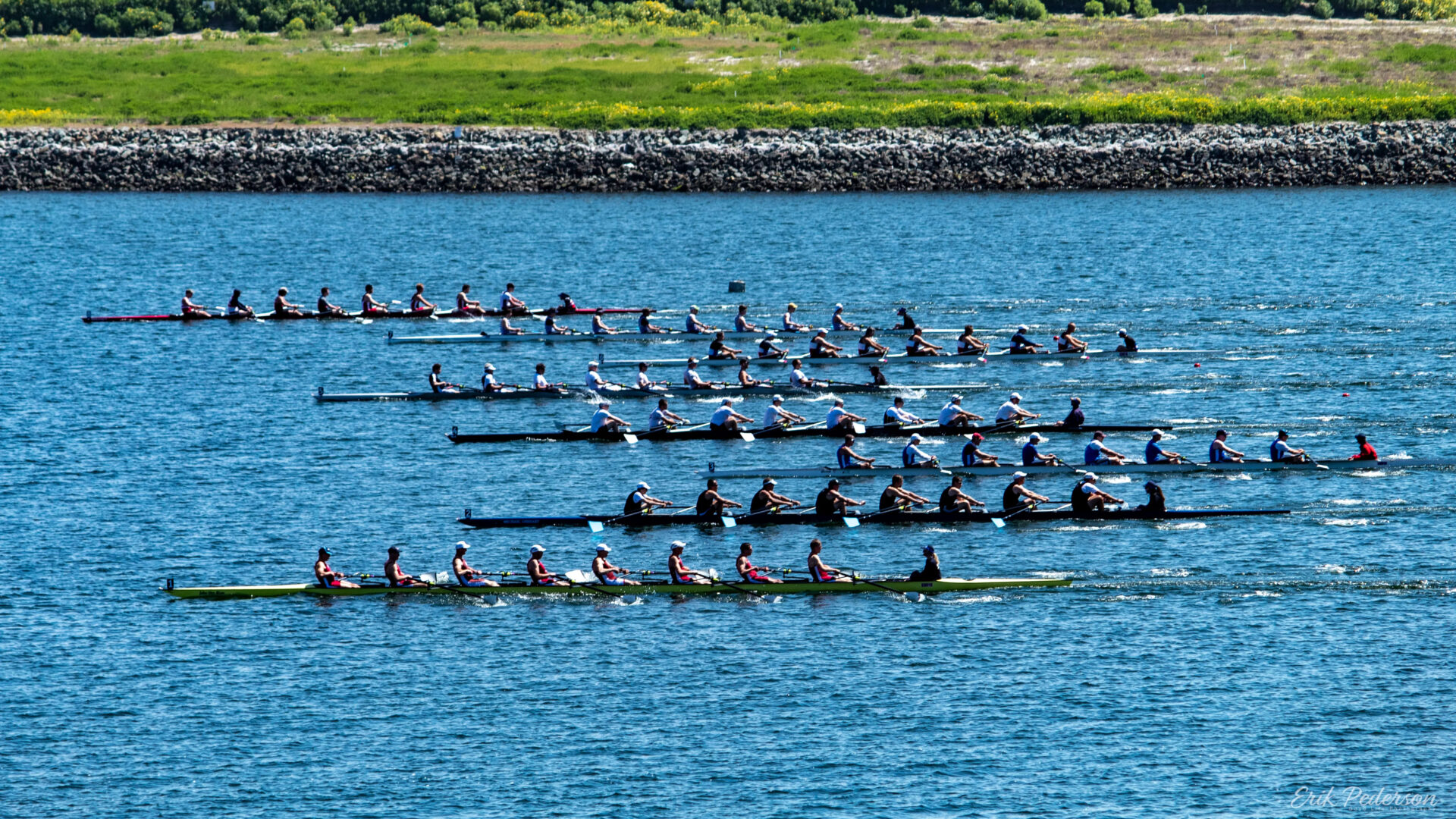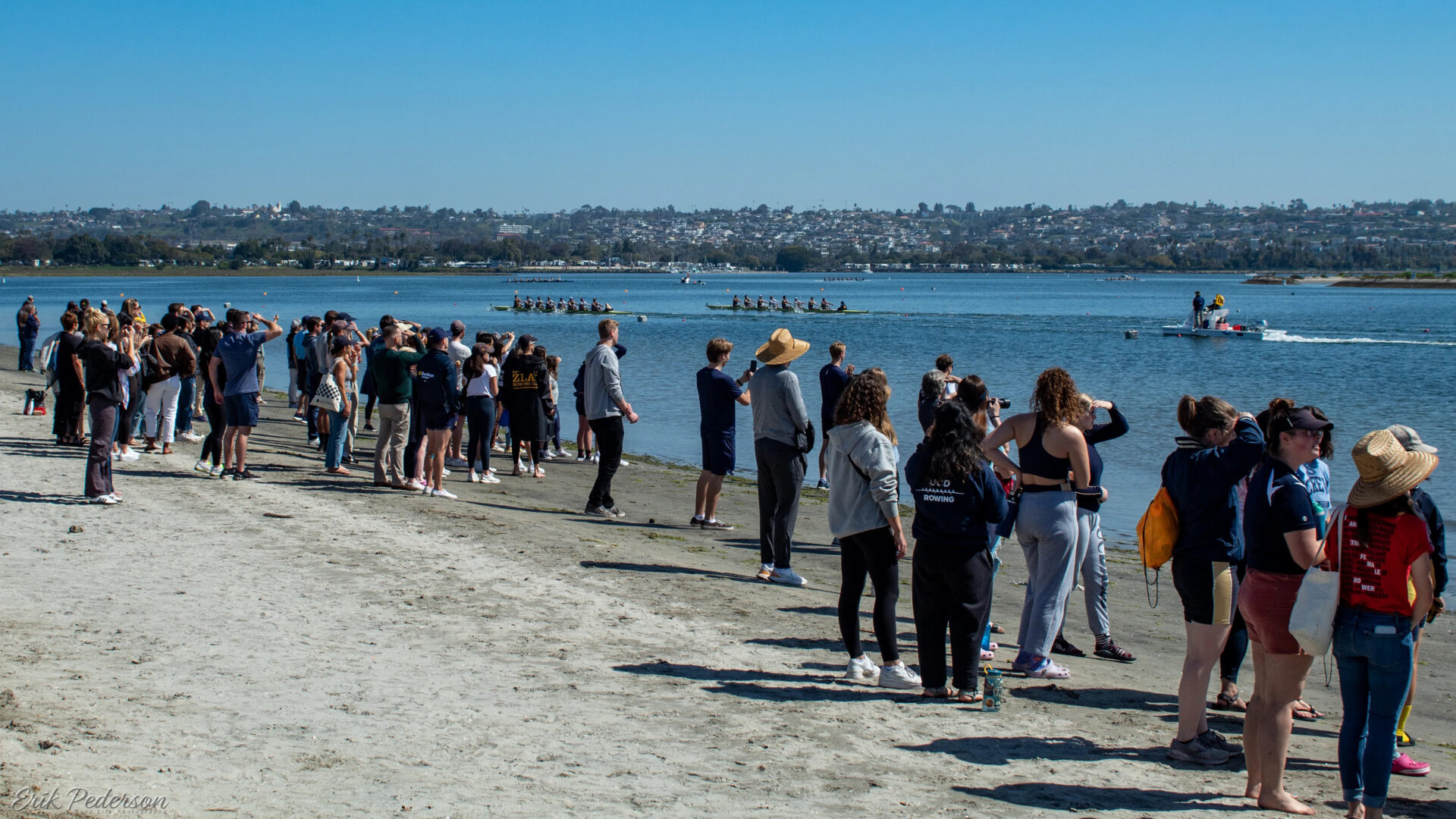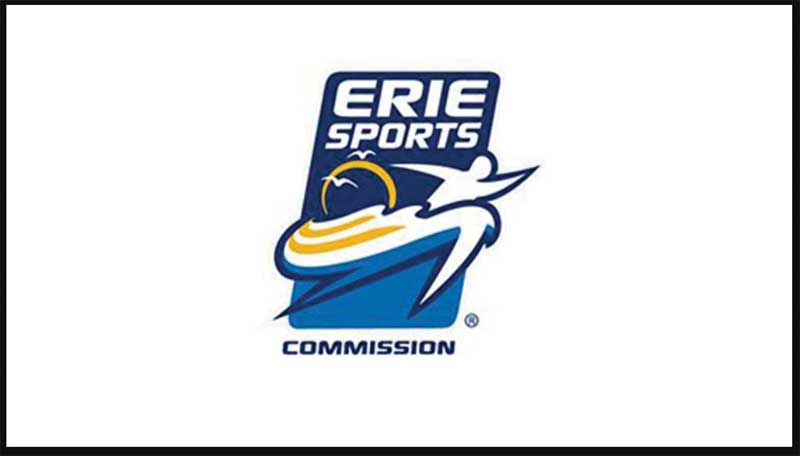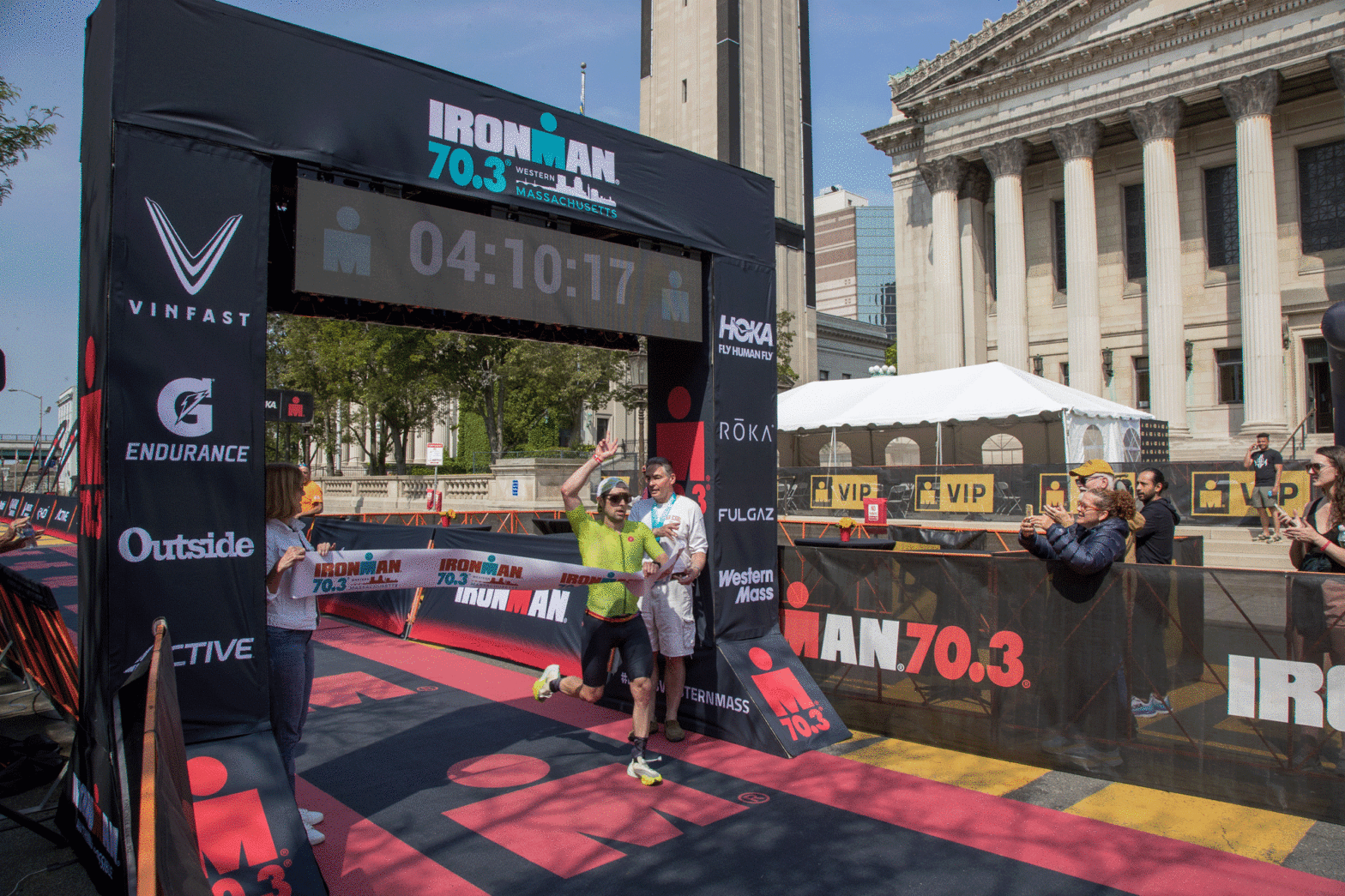
For most people, the word “rowing” might bring to mind Ivy League rivalries, Olympic glory, or the recent George Clooney-directed film The Boys in the Boat. But for the communities that host regattas across the country, rowing is far more than a niche sport—it’s a growing opportunity for thousands of athletes, parents, and spectators to travel each year to race, cheer, and spend.
Large-scale regattas can attract thousands of participants and deliver millions in economic impact. This year’s Youth National Championships in Sarasota, Fla, for example, drew nearly 10,000 people a day, while the annual San Diego Crew Classic brings in about 20,000 attendees over a single weekend and upwards of $2 million in hotel revenue alone.
Behind the scenes, however, these events are powered not by prestige but by painstaking organization. From permits and volunteers to safety protocols and food vendors, every detail counts. To find out what it really takes, we spoke with Sarah McAuliffe, senior director of programs at USRowing, and Bobbie Smith, regatta director of the San Diego Crew Classic. Between them, they’ve overseen some of the sport’s largest and most complex competitions. Here are their top 10 lessons for anyone who wants to plan a successful regatta.
1. Start with relationships
Both McAuliffe and Smith agree that the backbone of any regatta is people.
“The relationships you make are the things that are going to keep your event going strong,” McAuliffe says. At USRowing, that means forging ties with local organizing committees, visitor bureaus, and boathouses. Over time, those connections don’t just make logistics smoother; they strengthen the event’s financial foundation and help solve the inevitable problems that arise.
Smith, who manages a volunteer army of more than 400 in San Diego, echoes the sentiment: “Keeping your word to people and doing the right thing is always important. If they know you’ll back them up, they’ll be there for you.”
2. Secure your permits early
Permits may not be glamorous, but they’re non-negotiable.
“Permits are huge,” Smith says. “If you don’t have a permit, you don’t have an event.”
In San Diego, organizers must reserve park space a year in advance, begin the special event process six months out, and often wait until the week before the regatta to receive their alcohol license. On top of city approvals, the Crew Classic also requires permits from the Coast Guard and other agencies.
The lesson: start early, ask every authority you can think of, and build positive relationships with local officials. “Be nice to the people you’re working with,” Smith says. “If you make a mistake, they’ll help you—but only if they want to see you succeed.”
3. Put athlete safety first
If there’s one non-negotiable priority, it’s keeping rowers safe on the water.
“We have to nail the rowing operations first—safety, fairness, and accuracy of results come before anything else,” McAuliffe says. At every USRowing regatta, a dedicated safety officer monitors multiple weather stations and consults with local meteorologists. Transparent “if/then” protocols are spelled out in advance so athletes and spectators know what to expect if a storm rolls in. “It would be irresponsible for me to be surprised when a thunderstorm comes in,” McAuliffe says. “We plan for it, and we make logical decisions, not emotional ones.”
Smith agrees on the need for a back-up plan. “It is San Diego, so we tend to have amazing weather, but wind is definitely our biggest enemy.” In recent years, they’ve started racing earlier in the morning, when the wind isn’t as intense. “We always have a plan for wind,” she says, noting that they build in extra time in the schedule to deal with a worst-case scenario. “We’re a three-day event, but if we had to, we could compress everything into one day.”

4. Plan the venue carefully
Not every lake or river is regatta-ready. At minimum, USRowing requires a straight 2,000-meter stretch of flat water, warm-up and cool-down areas, ample access, and enough land to accommodate up to 100 boat trailers, which can be 60 feet long.
Beyond the water, proximity matters. “Our rowers are arriving at the venue by 6 or 7 a.m. every day,” McAuliffe explains. “We don’t want them driving 45 minutes each way. Hotels, restaurants, and food options need to be close.”
And don’t underestimate the appetite of hungry athletes. As McAuliffe puts it with a laugh: “Rowers eat. That’s one thing I’m confident in.”
5. Build and support a volunteer army
Few regattas have large staff; most rely heavily on volunteers. The Crew Classic mobilizes about 450 each year, while USRowing depends on 100–150 per day at its national championships.
The key, Smith says, is support without micromanagement. “When you’re dealing with a new volunteer, do your best to help them, answer their questions, get in the trenches with them. Once they know their job, though, don’t micromanage them. Let them do it.”
To keep everyone on track, the San Diego Crew Classic provides detailed “runbooks,” which contain job descriptions with timelines, equipment lists, and checklists. Combined with pre-event in-person and virtual meetings, they help even nervous newcomers feel confident when race day arrives.
6. Enhance the spectator experience
For McAuliffe, a regatta isn’t complete without music, food, and family-friendly activities. “My first priority is the water,” she said. “But a very close second is the event experience behind it. What happens when a family of five with young kids comes to the venue? Do they have something to enjoy besides watching races all day?”
At USRowing’s RowFest, for example, organizers combine racing with DJs, food vendors, and interactive activations to create a festival atmosphere. The Crew Classic follows a similar model, with vendor tents, alumni gatherings, and hospitality areas. The result: spectators leave with memories that extend far beyond the finish line.

7. Leverage technology wisely
Organizers today have more digital tools than ever, but both McAuliffe and Smith caution against overcomplication.“All the tech in the world is phenomenal,” McAuliffe says. “But you can also do a lot with basic spreadsheets.”
That said, some tools have become indispensable. USRowing uses Monday.com for project management, OnePlan for detailed venue mapping, and SignUpGenius to fill volunteer shifts. Texting services have proven vital for quick weather updates or schedule changes. Smith also relies on Monday.com, plus RegattaCentral, the industry-standard platform for race registration.
8. Expect the unexpected
No matter how thorough the plan, something will go wrong. Accept it, and prepare accordingly. “If there’s one thing we can guarantee in events, it’s that something is going to go not according to plan,” McAuliffe says.
Smith agrees: “If you don’t plan well, you might have 10 or 20 emergencies. If you do plan well, you might have one.” Contingency plans, detailed notes, and calm decision-making keep small problems from snowballing into crises.
9. Maximize community and economic impact
For host cities, regattas are more than sport, they’re business.
Smaller events may generate $1 million in spending, while national championships bring tens of millions. San Diego alone delivers between $1.8 and $2.2 million in hotel revenue, not counting restaurants, attractions, and shopping.
To maximize that impact, McAuliffe integrates local businesses into sponsorship packages and sends attendees a “Know Before You Go” newsletter with partner deals. “Before all of our regattas, we push out a newsletter to all of our attendees that says, here are our partners in the area and what they’re offering you. So, for youth nationals, 10,000 people are getting here’s the smoothie shop deal down the road. Here are the 20 lunch places to eat. Here are the things to do when you’re bored.” Meanwhile, Smith also recommends tapping into tourism boards and grant programs for partnerships and support.
And when it comes to sponsorship, Smith’s advice is simple: “Take care of the people you already have first and foremost. If they feel like they’re getting the kind of support they need, that they’re receiving the marketing, or whatever it is that they’re looking for out of your event, then you’re going to keep them. There’s nothing better than having a strong foundation.” Smith also suggests tapping your whole network of volunteers and board members to generate new sponsorship opportunities, as you never know who might have connections with a potential sponsor.

10. Learn, record, and improve each year
Both organizers stress the importance of continuous learning. Each year, Smith and her team debrief after the Crew Classic, documenting what worked and what didn’t. Those lessons feed into the following year’s runbooks, so mistakes aren’t repeated.
“We’re very rarely making the same mistake twice,” she said. “Keeping good notes is huge.” McAuliffe agrees, noting that post-event reflection is what allows regattas to grow stronger over time.
Rowing may be a niche sport, but the lessons of regatta planning apply to nearly every amateur competition. From permits and volunteers to sponsors and weather plans, the details can make or break the experience for athletes, spectators, and host communities alike.
As McAuliffe puts it, “Rowers are a niche group, but once you’re in, it’s really hard to get out—everyone loves it so much.” For Smith, it comes down to the joy of watching competitors cross the line: “It’s just about the athletes. When you get to see them racing and having a great time, it’s amazing.” And for planners, perhaps the real reward is the same: building an event where passion, precision, and community come together on the water

Electronic essentials
These helpful tech tools are recommended by USRowing and the San Diego Crew Classic.
Monday.com: Project management and task tracking. Helps staff keep timelines, assign responsibilities, and avoid missed deadlines.
OnePlan: Venue mapping tool that lets organizers design layouts down to the centimeter, including tents, barriers, and porta-potties.
SignUpGenius: Free online tool to organize and fill 100+ volunteer shifts per day with minimal confusion.
Texting Services: Critical for outdoor sports where weather can disrupt schedules. Allows instant communication with thousands of participants.
RegattaCentral: The rowing industry’s go-to site for race registration, results, and schedules.
Leadership skills
Volunteer management tips from the Crew Classic’s Bobbie Smith:
Support Newcomers: Provide clear instructions, answer questions, and guide them through their first event.
Trust the Experienced: “Once they know their job, don’t micromanage them. Let them do it,” says Bobbie Smith.
Use Runbooks: Create position-specific handbooks with checklists, timelines, and equipment lists so volunteers know exactly what’s expected.
Hold Pre-Event Meetings: Virtual or in-person briefings calm nerves, answer last-minute questions, and build team confidence.
Debrief & Improve: Gather feedback after the event to avoid repeating mistakes and make sure volunteers feel valued.









